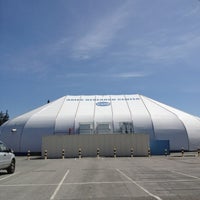

The parachute helped slow the rover’s descent into the red planet, which “came in hot” at about 940 miles per hour and in much thinner atmosphere than Earth. The first is that it tested the 165-foot-long and 51-foot-wide parachute attached to the rover in its wind tunnel which happens to be the largest in the world. The visitor center at the NASA Ames Research Center (photo fro wiki commons) The Ames research center backed the launch and landing of this rover in four major ways. “So, there is a very strong connection that the Bay Area has to this mission.” “We tested many aspects of the entry and defense, so obviously we tested the heat shield materials, and the parachute and method NASA Ames,” Hwang said. These soil samples would help researchers find out more about planet placements, life forms and answer a plethora of other questions NASA researchers have.īut arguably the most exciting aspect about this decades-long mission to collect soil samples from the red planet is the Bay Area’s major contributions, Hwang noted. “But there’s so many other questions that we have about our solar system, and one of them is simply you know, how did Mars form?” “Of course one of the burning questions,” Hwang said. The samples will help researchers determine the age-old question: Is there life on Mars?


 0 kommentar(er)
0 kommentar(er)
